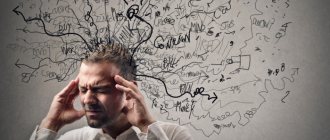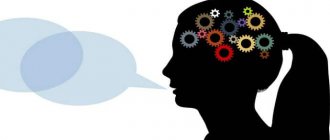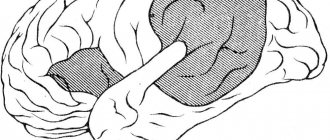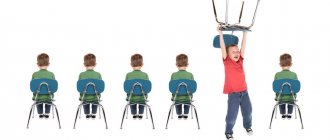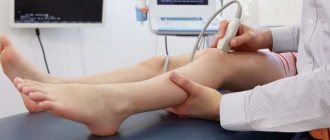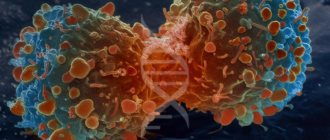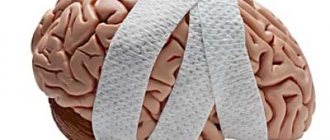The blow and its consequences
Stroke is a violation of blood circulation in the brain and the death of neurons. When blood circulation is disrupted, areas of the brain responsible for certain body functions die. How severely the speech apparatus will be affected and how soon the patient will speak depends on:
- degree of damage;
- timeliness of rehabilitation measures;
- which speech center is affected?
IMPORTANT! It is possible to completely restore speech function in an adult even if it is completely lost.
Dysarthria
Occurs when subcortical structures of the brain are damaged.
This is a violation of the pronunciation of words, caused by dysfunction of articulation, phonemic structure, speech breathing, and intonation.
As a result, a person’s speech becomes unintelligible.
There is increased salivation, slow pronunciation, and weakened articulation. The facial muscles become less mobile, resulting in distortion of spoken sounds. At the same time, the patient understands speech and is able to write and read.
There are four types of dysarthria:
- mild degree of the disease, in which signs of dysarthria are detected only by a specialist;
- speech is understandable to others, but there are defects in pronunciation;
- speech is illegible, understandable only to a narrow circle of people;
- severe dysarthria, characterized by a lack of spoken language.
Types of speech disorders
Loss of speech after a stroke is called aphasia and occurs due to the death of the speech center.
This complication occurs after both hemorrhagic and ischemic stroke.
Types of speech impairment:
- Sensory – damage to Wernicke’s center. It is located between the parietal and temporal lobes of the brain. In this case, the person completely loses the ability to perceive speech. Reproduction of individual words is possible, but there is no semantic load, and speech is not controlled by the patient. The ability to read is preserved, but the patient does not understand the meaning of what is written. There is also no writing skill;
- Motor - damage to Broca's center. Located between the frontal and temporal lobes. The ability to perceive speech by ear is completely preserved. The patient makes attempts to communicate and answer questions, but nothing comes of it. The ability to read and write is almost completely lost;
- Semantic – damage to the posterior-central and parietal areas of the cortex. A person is able to perceive and reproduce simple speech structures. He is not able to support complex dialogues. There are practically no logical connections in the patient’s speech;
- Acoustic-mnestic - damage to the middle part of the temporal cortex of the brain, namely, the 2nd temporal gyrus. Features similar to semantic damage. The patient can speak simple sentences of 3-4 words. Reading and writing skills are retained to a small extent;
- Optical-mnestic – damage to the inferotemporal-occipital region. The ability to perceive speech is preserved to a greater extent. The patient has difficulty recognizing objects; he is always searching for the right word. Speech is sometimes unrelated, but to a lesser extent compared to other types;
- Dynamic – pre-motor zone. The function of active speech is impaired. The patient can repeat the spoken sentence, but is unable to construct complex speech patterns himself. Verbs often disappear from speech. The answers to the questions are monosyllabic. Often repeating the last word of the interlocutor.
REFERENCE! “Pure” degrees of aphasia are extremely rare; usually it is a combination of several with a predominance of one over the others.
Rehabilitation activities
The period of restoration of speech functions takes a long time. It can last up to five years. To achieve results, it is necessary to create conditions that include:
- calm environment;
- exclusion of stressful situations;
- the patient's interest in the results;
- constant communication with the patient;
- prolonged conversations even in the absence of a reaction from the victim;
- sequence of all activities.
The rehabilitation period includes several stages. Each of them can have a different duration in time. Speech impairment during stroke includes the gradual return of the following abilities:
- correct pronunciation of sounds and words;
- speech understanding;
- drawing up proposals;
- pronunciation of meaningful speech;
- improving results.
Specialist help
A speech therapist is an obligatory step on the patient’s path to recovery, and you should not try to teach the patient to speak.
Often, due to incorrect actions, speech remains not fully restored.
It is important to start the rehabilitation process on time.
It has been established that the greatest progress can be achieved in the first 3 months after the lesion. In the future, the results will be less rapid. Methods of work vary depending on the condition of the patients: from relatively mild damage, when some speech functions are preserved, to its complete absence. To begin with, a neurologist determines the degree of damage and, based on its prognosis, the speech therapist begins work.
Speech therapy classes are conducted at home; this environment is comfortable for the patient, which means he can fully concentrate on the exercises.
Methods for motor form
In this case, it is necessary to overcome the patient's inability to move from syllable to syllable, which resembles stuttering. The specialist slowly, drawlingly sings numbers from 1 to 10, everyday phrases, days of the week. This is done to make it easier for the patient to catch all the sounds in words:
- Proverbs are pronounced without the last word, so that the patient tries to say it;
- Games of chess, lotto, cards, assembling construction sets;
- Methods for highlighting elements of speech, for example, highlighting a number when counting;
- Contrasting method - the speech therapist says one word “black”, the patient must answer “white”.
The patient should try to pronounce all the actions he performs when speech begins to form.
Method for dynamic form
It is necessary to restore structured statements and update verbs.
For rehabilitation, a speech therapist uses the following techniques:
- Start a conversation with the patient on a topic that is sensitive to him;
- Listen to a situational text to which you need to give simple answers “Yes, no”;
- Ask questions, seeking an answer with minimal use of words from the question;
- Reading words that are familiar to the patient;
- Lay out pictures, creating a story and ask the patient to tell this story;
- Drawing up congratulations and letters;
- Construct a conversation based on roles.
Method for sensory form
The goal is to restore control over the speech apparatus and the patient’s perception of oral speech. Since any attempts at verbal communication will be useless, treatment begins with pictures :
- Demonstration of pictures with objects or actions;
- Displaying images by category;
- Demonstration of images of body parts;
- Ask the patient to choose the correct name of the object and action among several images;
- Ask questions and ask the patient to answer with gestures or monosyllabic “yes, no”;
- Laying out cards with words under the corresponding image;
- Monosyllabic answers to questions using visual perception;
- Reading syllables, letters and words aloud;
- Change the rhythm and length of words;
- Filling in gaps in phrases;
- Listen to texts and answer questions regarding them;
- Retellings of texts;
- Reading more complex, expanded texts.
Methodology for acoustic-mnestic form
The volume of perceived information should be increased, and the connection between objects and words should be increased.
The sequence is as follows:
- Show images by category;
- Construct simple speech structures;
- Listen to texts and respond to them as fully as possible;
- Writing from dictation with gradual complication of speech patterns;
- Reading stories and then retelling them;
- Repeated displays of pictures at intervals of 1 minute;
- Independent classification of words with one generalizing word;
- Retelling texts according to plan, then without it;
- Large conversations on everyday topics.
In semantic form
It is necessary to restore the perception of objects in space.
- Show room layout images;
- Working with geographical maps, mechanical watches;
- Filling in missing elements in a phrase;
- Construction of phrases of spatial meaning;
- Impromptu story given by the topic;
- Analysis of complex words.
In amnestic form
The goal is to expand the vocabulary and restore the function of image perception. Rehabilitation methods:
- Identification of essential features of various objects;
- Demonstration of objects and body parts in accordance with their names;
- Independent drawing of objects with captions;
- Independent classification and selection of a generalizing word.
Important! As for the duration of classes, at the initial stages the duration does not exceed 5 minutes and by the middle of the course it reaches 20 minutes.
6.3. Improving comparison, generalization, abstraction capabilities
After a stroke or traumatic brain injury, the patient’s ability to compare different objects, find similarities and differences between them, highlight the most significant features of phenomena, distract from the direct meaning and understand the figurative meaning of words is often impaired. Disorders of this kind can significantly impair the patient’s ability to perform previously familiar daily activities. To improve the patient's capabilities, it is helpful to involve the patient in the following exercises.
1. Exercises for sorting objects: the patient is asked to group objects or pictures with images of geometric shapes, objects, animals or words denoting them. At the same time, it is necessary to explain the principles of categorization and justify the assignment of each object to a particular group. The principles for combining objects into groups can be their clearly distinguishable external features (color, shape, size, weight, location), their essential properties, their functional properties (the possibility of use in a particular area of human activity), as well as the meaning assigned to these objects ( for example, belonging to living or inanimate nature), etc. The exercise begins by sorting a small number of geometric shapes that differ only in one attribute (for example, triangles of equal size but different colors are sorted). Figures are gradually introduced that differ in two (for example, color and size), and then in three (for example, color, size and number of angles) characteristics. Patients are asked to repeat the sorting several times, using different classification principles. The difficulty of tasks increases over time. After geometric shapes, they move on to sorting images of objects or animals. All these exercises are recommended to be carried out in a playful way. 2. Exercises to identify a common feature: the patient is asked to isolate from a number of objects those that differ in a common feature. For example, the patient is shown pictures with images of a bottle, jug, book, glass, cup, vase, chair, flower, and is asked to combine objects in which water can be held into a group. 3. Exercise Finding similarities and differences: the patient is provided with paired cards with images of objects (for example, chair - armchair), names of natural phenomena (for example, autumn-spring) or concepts (for example, joy-sadness). For each pair of pictures, you need to find the similarities and differences of the corresponding objects, phenomena or concepts. 4. Establishing the items necessary to ensure the activity: the patient is asked to name the items necessary to carry out any activity. For example, the patient is asked to name the things that he will take with him to the store or for a walk. 5. Exercise Elimination of the superfluous: the patient is asked to exclude from a group of objects an object that does not have a common feature with the others. In relation to training skills of daily activity, this task is modified. For example, a patient is asked to name things that he would not wear for a ski trip. 6. Exercise Analysis of objects: the patient is asked to comprehensively characterize the signs and properties of the object being named or shown to him (which group it belongs to, what it consists of, where it is stored, how it is used, what it looks like). In a more complex task, it is proposed to analyze more abstract concepts. 7. Exercise Completing unfinished sentences: the patient is asked to come up with a completion to the phrase he started. They gradually move from simple sentences (There are bright lights in the night sky...) to expressions with a less clear ending. 8. Exercises Explanation of obvious facts: the patient is asked to explain things that are obvious at first glance (why a person takes an umbrella with him when going outside in bad weather, why he takes off his shoes when going for a swim, etc.). 9. Exercise Compiling a story based on plot pictures: the patient is asked to compose a story by looking at a sequential series of pictures conveying a certain plot. It is required to indicate the cause-and-effect relationships of the events depicted and to forecast the further course of events. 10. Exercise Completing an unfinished story: the patient is asked to come up with the ending of the story retold to him, based on the logic of the narrative. 11. Exercise Explanation of the main idea of the story: the patient is asked to give an explanation of the main idea of the story or fable read to him. In a similar way, they are asked to interpret the meaning of proverbs and sayings. 12. Exercise Establishing a fact: the patient is asked to find out a fact by asking the interlocutor a series of closed questions (requiring yes/no answers). For example, they offer to determine what item is hidden in the box. The patient is taught not to list all possible names at random in his own questions, but to systematically find out whether an object belongs first to general and then to smaller categories.
Difficult cases in speech therapy practice
The most difficult patients for a speech therapist are those who started treatment late.
These people have already plunged headlong into their condition.
There is no faith in recovery, the state is depressed.
When working with such people, you need to try to give results after the first sessions, so that the patient has an incentive.
Another difficult case is considered to be people who independently learned to pronounce some words or even sentences, but they do it incorrectly. They drop letters from words, swallow sounds, and often repeat the same word. The difficulty is that it is much easier to teach something new than to reteach it in a new way.
How to treat aphasia
As everyone is taught from childhood, “nerve cells do not regenerate.” In fact, this is not entirely true: even in very old people, new connections can be formed between living neurons - “bridges” along which information will flow from the nerve cell on one side from the source of the stroke to the neuron on the other side. But for this you need:
- daily activities that will use areas of the brain located next to the dead zone;
- sufficient blood supply to the brain, especially in the affected area;
- providing the brain with the necessary amount of oxygen;
- elimination of additional chaotic impulses that arise in the brain during stress and prevent the flow of impulses from being directed to the area near the site of dead cells. Stress in aphasia is caused by the fact that a person understands his inability to convey his thoughts to others.
Aphasia after a stroke is also treated according to these principles. It needs to be started as early as possible - as soon as the swelling of the brain is stopped, which is manifested by depression of consciousness (from drowsiness to coma), convulsions, and hallucinations.
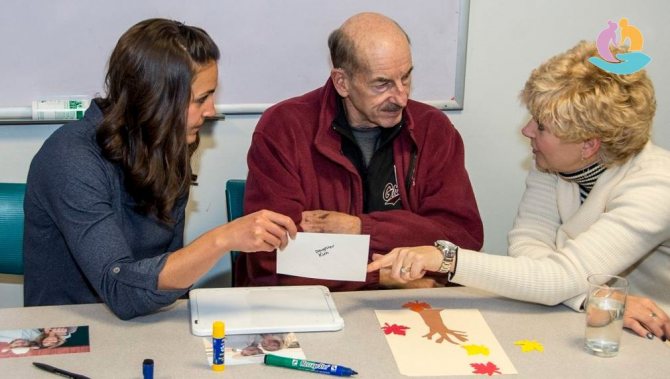
- started as early as possible;
- carried out daily, to the extent that the patient can handle;
- is aimed at correcting not only oral, but also written speech, if such a syndrome occurs in your relative.
In some cases, aphasia after a stroke can resolve on its own, but this is extremely rare, so you should not count on such an outcome. Basically, treatment of this syndrome is a long and painstaking process, requiring great dedication from relatives.
Let's look at each type of therapy in detail.
Drug treatment
It is prescribed by a neurologist at the hospital where the stroke patient is located, and begins as early as possible. Drug therapy includes drugs that improve the delivery of oxygen and nutrients to the brain, strengthen nerve connections in it, and optimize metabolism in it. This:
See also:
- "Cerebrolysin" ("Semax");
- "Gliatilin" ("Holitilin", "Cereton");
- "Somazina" ("Ceraxon");
- succinic acid preparations “Cytoflavin”, “Reamberin”, “Mexidol”;
- B-group vitamins: Neuromidin, Milgamma.
These drugs are used in combination, according to the scheme that is practiced by this medical institution. Initially, they are administered intravenously and intramuscularly for 1-3 weeks. Next, they switch to the tablet form of these medications.
In addition to these medications, the patient is administered those medications that his condition requires. Therefore, if aphasia after a stroke is complemented by other, more life-threatening disorders, the complex of treatment for the speech disorder itself is “cut down” - to reduce the drug load on the internal organs.
Physiotherapy
To treat aphasia after a stroke, physiotherapeutic procedures are performed to improve cerebral circulation. This:
- acupuncture;
- electromyostimulation (exposure to current pulses) of the muscles involved in articulation;
- exposure of the cerebral cortex to a magnetic field.
Classes with a speech therapist
A special speech therapist, an aphasiologist, deals with the relief of aphasia after a stroke. Typically, these specialists work in the same medical institution that treats stroke, but in some cases, relatives have to find such a specialist on their own.
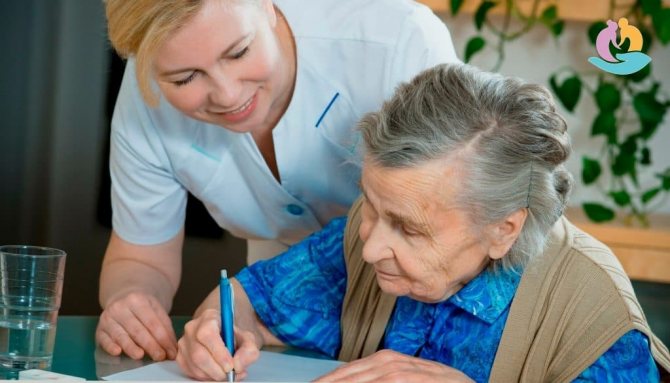
Classes with an aphasiologist should begin in the neurological department, a week after the patient is transferred from the intensive care ward. This doctor trains an older person who has had a stroke for 5-7 minutes at first, gradually increasing the training time to 15 minutes. It works like this:
- Build a dialogue with the patient.
- Seek understanding.
- Practice reading.
- Recall writing skills.
Before starting classes with a patient with sensory aphasia, if he does not understand his condition, he is asked to write a word (usually he writes a set of letters), then read it. They communicate with him through facial expressions and gestures. On a piece of paper with a set of letters, underline with a pencil or pen.
Prognosis for speech restoration
Restoring speech functions to the level they were at before the stroke is more than possible. However, the older the person, the more difficult it is to do this. The speed of recovery is also influenced by the individual attitude of the patient and the timely initiation of the rehabilitation process. According to doctors, it is better to start this process in the first week after a stroke.
In conclusion, if someone close to you finds yourself in a similar situation, you don’t need to try to teach him yourself. Even detailed instructions on the Internet cannot replace a specialist. It is worth consulting with a doctor and finding a speech therapist as quickly as possible who can restore the ability to communicate to your relative. At this moment, the patient needs special attention, you need to constantly talk to him, in every possible way encourage attempts to speak and push him to do so.
Stages of the long journey
To restore lost speech, you must first understand how it is formed, which organs and brain structures are involved in its occurrence and expression. In Russian science, the first to outline the contours and main links of the “chain” that ends with the formation of a speech message was the outstanding psychologist L. S. Vygotsky. First, a motive arises - a desire, it forces the brain to create a certain general plan, which is expressed in the form of internal speech - a future statement in a collapsed form.
And only then does a speech structure arise, which is embodied in a specific phrase. This process could be compared to a conveyor belt, which first receives a shapeless piece of plastic, which goes through various stages of processing and ultimately turns into an object painted in a certain color. This is the emotional coloring of speech - its intonation richness, accents that allow one to convey shades of meaning.
This process is carried out every second in the brain of any healthy adult: both in order to talk about the price of sugar and in order to pronounce an actor’s monologue.
The founder of Russian neuropsychology, A. R. Luria, studied each component of speech formation and the mechanism of their interaction with each other. It turned out that semantic connections play a major role in this process. If these connections do not work at least partially, both speech perception and speech reproduction are impaired.
For example, the brain of a healthy person reacts to the word “doctor” in almost the same way as to the words “doctor”, “doctor”, “physician”. When normal brain functions are disrupted as a result of injury, stroke, or the influence of potent drugs, then a person is more likely to react to the word “announcer,” which sounds similar to the word “doctor.”
